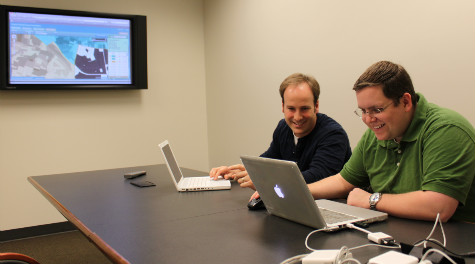Two W&M teams competing in first Virginia Redistricting Competition
For the first time in Virginia’s history, citizens have an opportunity to have a place at the table when it comes to drawing legislative districts. Previously left to legislative staffs and law makers, technological advances over the last decade have made the tools necessary to the redistricting process accessible to the public via the Internet.
Two teams from the college are participating in the first Virginia Redistricting Competition, which is sponsored by the Wason Center for Public Policy at Christopher Newport University and the Public Mapping Project. Teams representing 13 Virginia colleges and universities are participating in the competition, which is designed to educate students and the public about the process of redistricting, according to the competition’s Web site.
Team one, led by faculty advisors Professors John McGlennon and Ronald Rapoport of the government department, is comprised by undergraduate government students and includes Alexander Bramsen ’12, Devin Braun ’12, Eric Ames, ’12, Thomas Chappell ’11, Dimelza Gonzales-Flores ’12, Russell Taylor ’11, Matt Muller ’12, and Andrew Bessler ’12.
"For me this is the ultimate student extracurricular activity. We are interactively learning the geography, history, and politics of a very relevant practice: redistricting,” Braun said.
Redistricting is usually done in response to the decennial national census to reflect changes in population growth patterns, according to the competition’s Web site. Students are using data from the 2010 National Census to redraw electoral districts for the Virginia House of Delegates, the Senate of Virginia, and the United States House of Representatives.
Team two, comprised of students from the Law School, includes Brian Cannon J.D. ‘11, Alexander Grout J.D. ‘12, John Holden J.D. ‘12, Meredith McCoy J.D ‘12, Rebekah Miller J.D. ‘12, Nicholas Mueller J.D. ’12, Peter Newman J.D. ’13, Samuel Robinson J.D. ‘11, and Brian Rothenberg J.D. ’13.
Rebecca Hulse, professor of practice and coordinator of the Law School’s Election Law Program, is the faculty advisor for the law student team.
"The William & Mary Law School team aims to win it all, " said Miller. "It is a competition after all!
To complete the process, competing teams are using Public Mapping Project software to produce a redistricting plan with maps and narrative explanations.
“With new mapping software ... anyone can begin to understand and appreciate the complexities of the redistricting process,” she said.
Students must ensure that the districts comply with the federal Voting Rights Act, and they must consider other criteria such as contiguity, equipopulation, communities of interest and compactness, Miller added.
Thomas Mann of the Brookings Institution and Norman Ornstein of the American Enterprise Institute will judge the competition, which began February 10. Student teams have until March 10 to submit their map. Winners are expected to be announced March 22 in Richmond. First and second place maps in each legislative division will receive cash prizes, and each team that submits final maps and explanations will receive honorary awards.
















